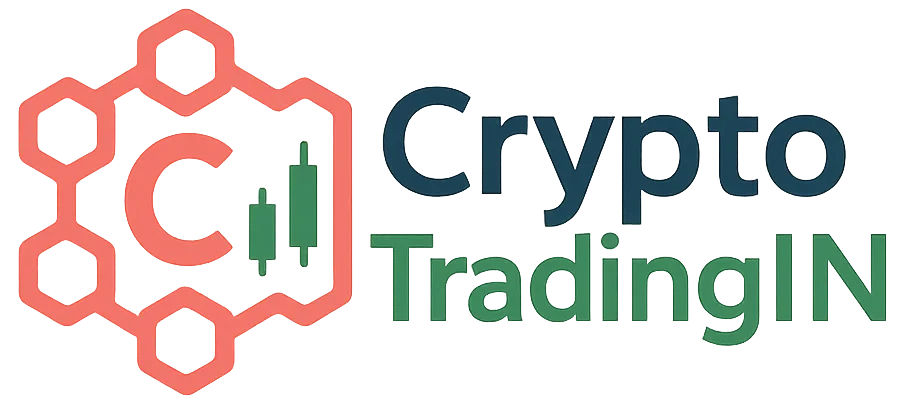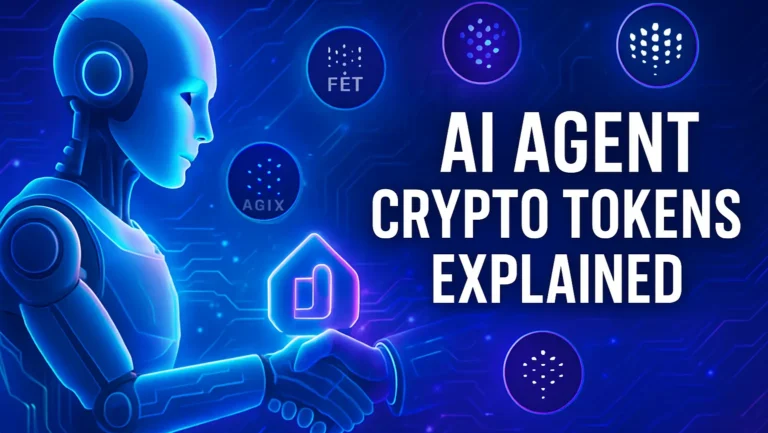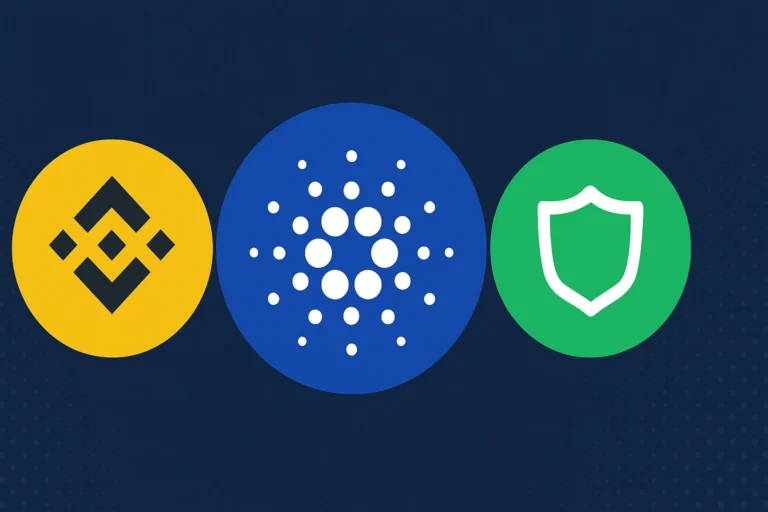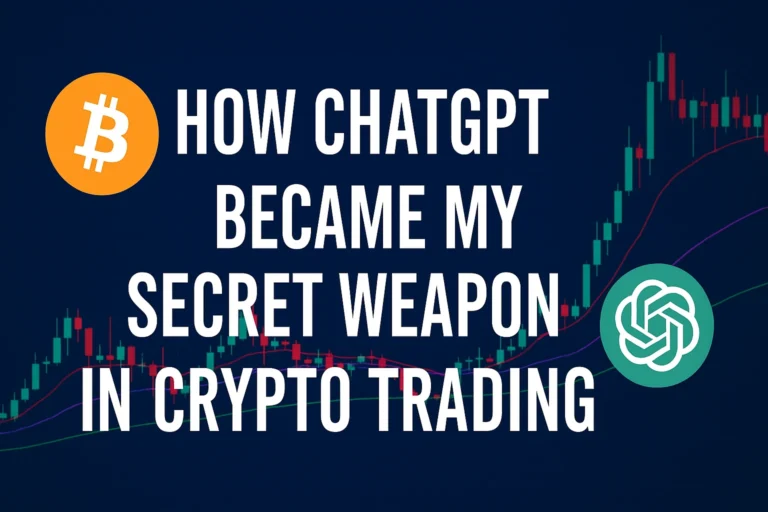DePIN Crypto Networks and Decentralized Infrastructure Tokens
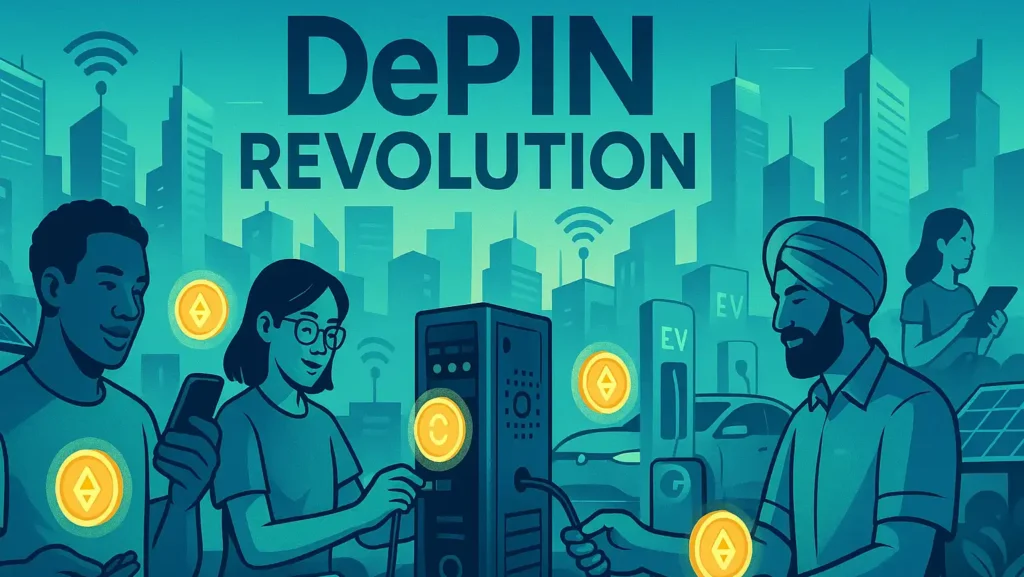
DePIN Crypto: A New Era of Infrastructure
As the world moves toward decentralization, a new kind of digital infrastructure is emerging one that is not owned by a single company or government. Instead, it is built and powered by individuals from across the globe. This is the world of DePIN, or Decentralized Physical Infrastructure Networks.
DePIN networks are changing how we think about building and using internet services. They are powered by people, not corporations, and they reward users through cryptocurrency tokens known as Decentralized Infrastructure Tokens.
In this article, we will break down what DePIN networks are, how they work, and why they might be the future of the internet.
Read: The 4 Blockchain Eras: Ethereum’s Modular Revolution
What is a DePIN Network?
DePIN stands for Decentralized Physical Infrastructure Network. It is a type of network where the physical infrastructure such as WiFi hotspots, data storage devices, sensors, or even electric vehicle (EV) chargers is owned and operated by individuals, not centralized companies.
Think of it like this:
- Instead of a single company building and maintaining thousands of internet towers,
- Thousands of people around the world run small devices or services that form a global network.
These individuals are rewarded with tokens for their participation. That is where Decentralized Infrastructure Tokens come in.
Why Is Decentralization Important?
To understand the value of DePIN, let us first understand why decentralization matters.
In today’s world, most online infrastructure is centralized. That means a few large companies (such as Amazon, Google, or telecom giants) control the servers, storage, and communication networks we use daily.
Problems with this include:
- High cost: Central companies often charge premium prices.
- Single point of failure: If one company fails or decides to block access, the service stops.
- Lack of privacy: Your data is stored and controlled by corporations.
DePIN networks solve this by distributing control to everyday people. Anyone can join, contribute hardware or data, and get paid in return. It is a more open, inclusive, and resilient model for infrastructure.
Read: Ai And Crypto Integration Use Cases
How Do DePIN Networks Work?
Let us break it down step by step:
1. The Network Participants
People join the DePIN network by setting up physical devices like:
- Internet hotspots
- Storage hard drives
- Environmental sensors
- Electric vehicle charging stations
These devices provide services to the network.
2. The Blockchain Layer
DePIN networks use blockchain technology to track:
- Who is providing services
- How much data or power they are offering
- How much reward they earn
Blockchain makes this transparent and secure.
3. The Token System
Participants are rewarded with Decentralized Infrastructure Tokens. These tokens work like cryptocurrency and can often be traded on crypto exchanges for money.
Real-Life Examples of DePIN Projects
Let us look at some popular DePIN-based projects to understand better.
1. Helium Network
Helium is one of the most well-known DePIN networks. It allows people to run wireless hotspots that provide internet connectivity for IoT (Internet of Things) devices. Hotspot owners earn HNT tokens as a reward.
2. Filecoin
Filecoin allows individuals to rent out unused storage space on their computers. Other users pay tokens to store their files on the network. It is a decentralized alternative to Google Drive or Dropbox.
3. DIMO
DIMO is a DePIN project that gathers vehicle data using connected devices. People who share their car data can earn tokens. This data helps improve transportation systems and services.
4. WeatherXM
Users install small weather stations and contribute real-time climate data. This data is valuable for farming, shipping, and research, and participants get rewarded.
What Are Decentralized Infrastructure Tokens?
Now that we understand DePIN, let us focus on the tokens that power these networks.
Decentralized Infrastructure Tokens are the native digital currencies of DePIN networks. They serve several purposes:
- Rewards: People who provide services get tokens.
- Payments: Users may use tokens to access services like internet or storage.
- Governance: Token holders may vote on decisions within the project.
- Staking: Some networks allow staking tokens to earn passive income.
These tokens usually have value and can be traded on cryptocurrency exchanges.
Read: 5 Best Decentralized Launchpads
Benefits of DePIN Networks
Let us explore the major benefits of DePIN and decentralized infrastructure tokens:
1. Cost-Effective
Because there are no middlemen, services like internet or storage can become cheaper for users.
2. Open Participation
Anyone can join a DePIN network. All you need is the right hardware and internet access.
3. Better Privacy
Your data does not go through centralized corporations. You control what you share.
4. Passive Income
By contributing to the network, you can earn tokens passively, a good way to earn extra money.
5. Scalability
DePIN networks can grow faster because they do not depend on one company building all the infrastructure.
Challenges and Risks
Of course, DePIN is not without problems. Here are some challenges:
1. Technical Knowledge
Setting up a device may need some tech skills, which could be a barrier for some.
2. Regulation Uncertainty
Since it involves crypto, some governments may regulate or ban parts of the network.
3. Token Volatility
The value of infrastructure tokens can go up or down quickly, making it risky as an income source.
4. Network Quality
Because the network is built by individuals, quality can vary from place to place.
Future of DePIN Networks
Despite challenges, the future of DePIN looks promising. As internet usage grows and users demand more privacy, faster service, and lower costs, DePIN crypto offers a community-driven solution.
Many experts believe that DePIN crypto is a core part of Web3, the next phase of the internet that focuses on user control, privacy, and decentralization.
Companies, startups, and even governments are beginning to explore how DePIN can help build:
- Smart cities
- Decentralized energy grids
- Open environmental monitoring systems
- Global communication networks
How to Get Started with DePIN?
If you are interested in joining a DePIN network, here are simple steps:
- Choose a project: Research projects like Helium, Filecoin, or DIMO.
- Buy or set up a device: Depending on the project, you may need to buy a hotspot or plug in a storage device.
- Register and connect: Follow the network’s instructions to join and connect your device.
- Start earning: As your device contributes to the network, you will begin earning tokens.
Remember to check your local laws regarding mining and crypto before starting.
Conclusion: A New Way to Build the Internet
DePIN crypto networks and decentralized infrastructure tokens are transforming how we think about the internet and infrastructure. By allowing everyday people to build and maintain critical systems, DePIN brings us closer to a world that is more open, fair, and community-led.
Whether you are a tech enthusiast, investor, or simply curious about the future of the internet, understanding DePIN crypto could give you a head start in the next big wave of innovation.
Disclaimer– This article is for educational purposes only. It does not provide financial or investment advice.
Contents
- 1 DePIN Crypto: A New Era of Infrastructure
- 2 What is a DePIN Network?
- 3 Why Is Decentralization Important?
- 4 How Do DePIN Networks Work?
- 5 Real-Life Examples of DePIN Projects
- 6 What Are Decentralized Infrastructure Tokens?
- 7 Benefits of DePIN Networks
- 8 Challenges and Risks
- 9 Future of DePIN Networks
- 10 How to Get Started with DePIN?
- 11 Conclusion: A New Way to Build the Internet
